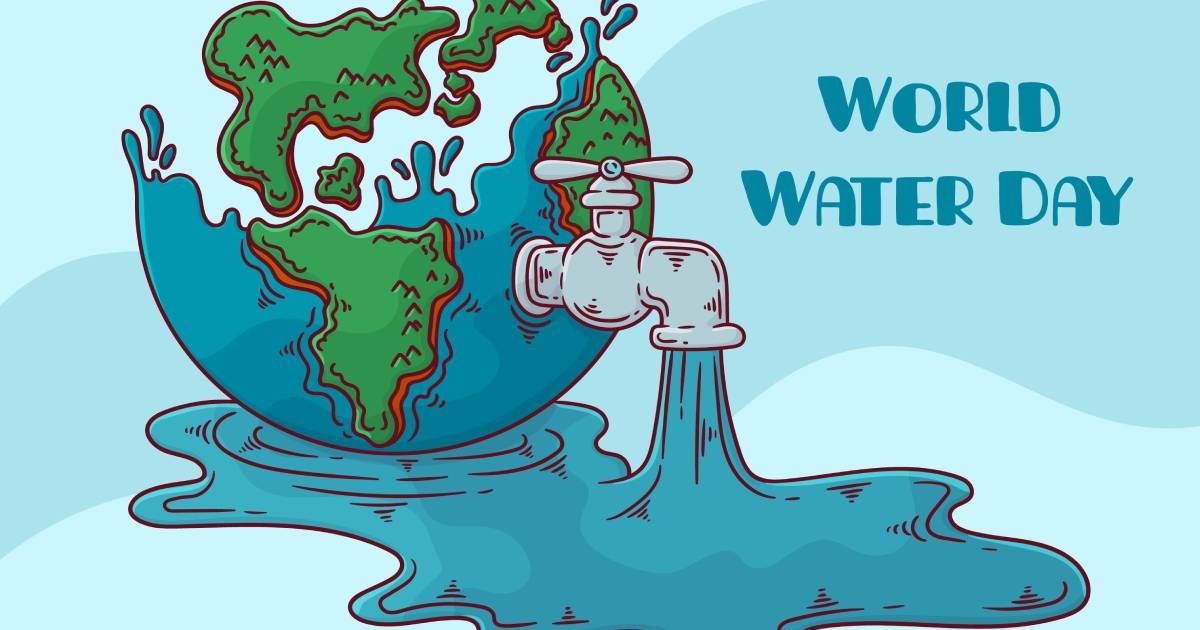Introduction
World Water Day is a global observance held annually on March 22nd, dedicated to highlighting the importance of freshwater and advocating for the sustainable management of water resources. It serves as a reminder of the critical role water plays in our daily lives, ecosystems, and socio-economic development. This essay explores the significance of World Water Day, current global water challenges, initiatives for water conservation and management, and the importance of collective action for a water-secure future.
The Significance of World Water Day
- Awareness and Education: World Water Day provides an opportunity to raise public awareness about water-related issues such as water scarcity, pollution, access to clean water, and sanitation. It educates individuals, communities, and policymakers about the importance of water conservation and sustainable water management practices.
- Global Collaboration: It encourages collaboration and partnerships among governments, organizations, businesses, and communities to address water challenges collectively. Through workshops, conferences, and campaigns, stakeholders come together to share knowledge, experiences, and innovative solutions.
- Policy Advocacy: World Water Day serves as a platform to advocate for effective water policies, regulations, and investments at local, national, and international levels. It highlights the need for integrated water resource management, water-efficient technologies, and equitable access to water and sanitation services.
- Empowering Communities: By focusing on water issues, World Water Day empowers communities to take action in conserving water, protecting water sources, promoting hygiene practices, and ensuring water equity for vulnerable populations.
Global Water Challenges
- Water Scarcity: Many regions around the world face water scarcity due to population growth, urbanization, climate change, and inefficient water use practices. This scarcity leads to competition for water resources among sectors such as agriculture, industry, and households.
- Water Pollution: Pollution from industrial discharges, agricultural runoff, improper waste disposal, and urban activities contaminates water bodies, affecting water quality and aquatic ecosystems. Polluted water poses serious health risks to humans and wildlife and hinders sustainable development.
- Lack of Access to Clean Water and Sanitation: Millions of people globally lack access to safe drinking water and adequate sanitation facilities, leading to waterborne diseases, hygiene-related issues, and socio-economic disparities, particularly in rural and marginalized communities.
- Climate Change Impacts: Climate change exacerbates water challenges through altered precipitation patterns, droughts, floods, and sea-level rise. These impacts disrupt water availability, agricultural productivity, water quality, and ecosystem balance, posing risks to human livelihoods and biodiversity.
Initiatives for Water Conservation and Management
- Water Conservation Practices: Encouraging water conservation practices such as rainwater harvesting, water-efficient irrigation techniques, greywater recycling, and fixing leaks in water supply systems can significantly reduce water wastage at individual and community levels.
- Protecting Watersheds and Ecosystems: Preserving and restoring natural ecosystems such as forests, wetlands, and watersheds helps maintain water quality, regulate water flows, recharge aquifers, and support biodiversity, contributing to sustainable water management.
- Investing in Water Infrastructure: Investing in modern water infrastructure, including water treatment plants, distribution networks, and sewage systems, improves access to clean water and sanitation services while minimizing water losses and pollution.
- Promoting Water-Efficient Technologies: Promoting the adoption of water-efficient technologies in agriculture, industry, and households, such as drip irrigation, water-saving appliances, and wastewater treatment systems, enhances water productivity and reduces environmental impacts.
- Integrated Water Resource Management (IWRM): Implementing IWRM approaches that consider the interconnectedness of water resources, land use, ecosystems, and human needs helps balance water supply and demand, mitigate conflicts, and sustainably manage water resources for present and future generations.
The Role of Individuals and Communities
- Water Conservation at Home: Individuals can contribute to water conservation efforts by fixing leaks, using water-efficient appliances, practicing mindful water use behaviors (e.g., shorter showers, turning off taps when not in use), and harvesting rainwater for non-potable purposes.
- Community Engagement: Communities play a vital role in water stewardship through collective action, awareness campaigns, participatory water management initiatives, and advocating for sustainable water policies and investments at the local level.
- Education and Capacity Building: Educating people, especially children and youth, about water conservation, hygiene practices, and environmental stewardship fosters a culture of responsible water use and empowers future generations to address water challenges proactively.
- Partnerships and Collaboration: Collaborating with local governments, NGOs, businesses, and academia strengthens community resilience to water-related risks, promotes knowledge sharing, leverages resources effectively, and promotes inclusive and equitable water governance.
Conclusion
World Water Day serves as a catalyst for collective action and innovation in addressing global water challenges and achieving water security for all. By raising awareness, promoting sustainable water practices, investing in water infrastructure, and fostering partnerships, we can ensure the availability of clean water for drinking, sanitation, agriculture, industry, and ecosystems while safeguarding water resources for future generations. Individual actions, community engagement, and multi-stakeholder cooperation are key drivers in building a water-secure and sustainable world.
ChatGPT can






